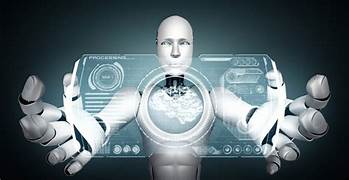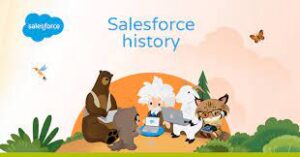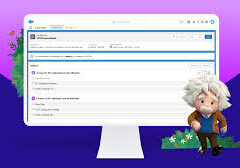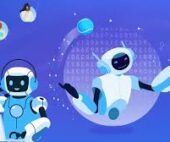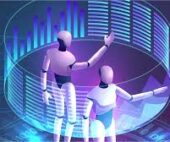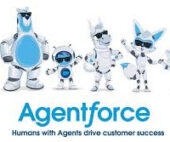A comprehensive research effort has led to the introduction of a simplified model designed to address two fundamental questions:
- What are AI agents capable of, and what characteristics enable these capabilities?
- Which types of AI agents do not qualify as true agents? Additionally, which capabilities and characteristics align more closely with AI copilots and assistants, their predecessors?
Building upon this model, an additional practical question is examined:
- What gaps exist between current AI market offerings and the conceptual definitions derived from the perspectives of AI experts and visionaries? (Refer to Section 5)
1. Why Does It Matter?
Understanding the concept of an “AI agent” can be challenging, particularly for individuals who simply use AI in their daily workflows. The distinction between AI agents, copilots, and assistants is critical in determining the nature of the AI tools being used for work or personal applications. Those seeking a technical breakdown may proceed directly to the “Agentic AI Features” section.
For AI power users or professionals responsible for AI implementation within an organization, recognizing the emerging AI tools and their functionalities is essential. Similarly, individuals working at AI startups should understand their product’s positioning within the market and be aware of industry trends that may impact future development.
The year 2025 is widely anticipated as the period when AI agents will become enterprise-ready and well-understood by the market. This development is viewed as part of a long-term trend:
- The widespread adoption of AI agents is expected to be one of the most significant advancements in AI, as indicated by experts such as Andrew Ng and organizations like Google.
- The AI agent market is projected to grow by 45% annually, reaching $47 billion globally by 2030.
- Microsoft CEO Satya Nadella has suggested that agentic applications could eventually replace traditional SaaS solutions.
However, despite these forecasts, the term “AI agent” remains vague, requiring further clarification.
2. AI Agent Definitions
A widely accepted definition from Gartner Innovation Insights (April 2024) states:
“AI agents are autonomous or semi-autonomous software entities that use AI techniques to perceive, make decisions, take actions, and achieve goals in their digital or physical environments.”
This definition highlights five key capabilities, with autonomy serving as the distinguishing factor that separates AI agents from other software with similar functionalities.
MarketsandMarkets expands upon this definition by adding two additional high-level characteristics:
“AI agents operate within specific environments, interfacing with users, systems, or other agents, and are characterized by their capacity for adaptive learning, context-aware processing, and autonomous function across varied applications.”
- Context-aware processing refers to an AI agent’s ability to adapt its behavior based on environmental conditions and interaction history.
- Adaptive learning implies that an AI agent possesses memory and can determine what information should be retained to enhance its functionality over time.
- Interaction with other agents is another crucial factor, allowing AI agents to collaborate within dynamic multi-agent systems, significantly expanding their potential beyond individual tasks.
Autonomous agents are significant because they have the potential to function as employees or coworkers. Furthermore, their ability to collaborate with other AI agents fosters the development of human-AI teams capable of human-like teamwork.
3. AI Agents vs. AI Workflows vs. AI Copilots
AI-driven software entities do not necessarily need to be fully agentic to be classified as AI agents. Many exist as semi-autonomous agents, possessing memory and goal-driven decision-making but lacking external tools, sensors, or multi-agent interaction capabilities (refer to Section 5 for specific examples).
Currently, the distinction between AI agents and other AI tools is not universally defined. Instead, this differentiation exists across multiple dimensions, including decision types, action types, and other functional capabilities. The following sections explore these distinctions further.
3.1. Business Perspective: AI Workflows and Agents
A 2024 article by Anthropic highlights an important distinction:
- AI workflows rely on large language model (LLM) calls as predefined process components.
- AI agents, on the other hand, dynamically direct processes rather than following predefined steps.
For companies implementing AI tools, even basic AI workflows provide value. However, these workflows introduce challenges for developers and users alike. The evolution of agentic AI platforms could alleviate these challenges, enhancing automation capabilities.
3.2. Personal Perspective: AI Copilots and Agents
From an individual user’s perspective, an AI copilot often suffices without requiring the full capabilities of an AI agent. Copilots support decision-making by offering context-specific recommendations and working collaboratively with users over multiple iterations.
AI copilots exhibit characteristics such as:
- Proactive behavior (initiating actions based on user needs rather than merely responding to prompts)
- Context awareness and learning (enhanced personalization over time)
- Information retrieval (accessing external data sources efficiently)
Capabilities such as autonomy and goal-oriented behavior define AI agents. The ability to interact dynamically with an environment—beyond simple information retrieval—further differentiates agents from copilots and assistants.
4. Agentic AI Capabilities and Features Chart
The following distinctions emerge from the “agentic capabilities model”:
- AI Assistants operate as passive LLM-based request processors, responding only when prompted.
- Copilots function as enhanced assistants, proactively suggesting relevant information and working alongside users iteratively.
- Agents integrate both assistant and copilot capabilities while leveraging external tools and sensors to operate autonomously.
One area of debate concerns memory. Some sources claim memory is exclusive to AI agents, while others argue that true copilots must possess memory to offer personalized assistance. This distinction is often influenced by business marketing strategies rather than purely technical considerations.
5. Mapping AI Tools to Agentic Capabilities
AI tools vary widely in versatility. Some specialize in narrow tasks, while others serve broad use cases.
5.1. Specialized AI Tools
Many widely used AI tools focus on specific tasks, such as:
- Text enhancement (Grammarly, QuillBot)
- Text-to-speech (ElevenLabs)
- Image editing (Canva, Remove.bg)
These tools function as AI-powered utilities rather than true AI assistants, copilots, or agents.
5.2. Advanced Versatile AI Assistants
More versatile AI tools, such as ChatGPT, Claude, Gemini, and POE, enable broad conversations and contextual processing. Notably:
- ChatGPT qualifies as an AI copilot due to features like memory and collaborative document editing.
- Claude functions as an AI copilot, with features such as Claude Artifacts for document iteration and Claude Projects for knowledge base management.
- NotebookLM, a Google-developed assistant, offers robust knowledge integration but lacks customizable personas.
The distinction between AI assistants, copilots, and agents will continue evolving as AI technology advances. Understanding these differences is crucial for businesses and users seeking to maximize AI’s potential in various applications.


